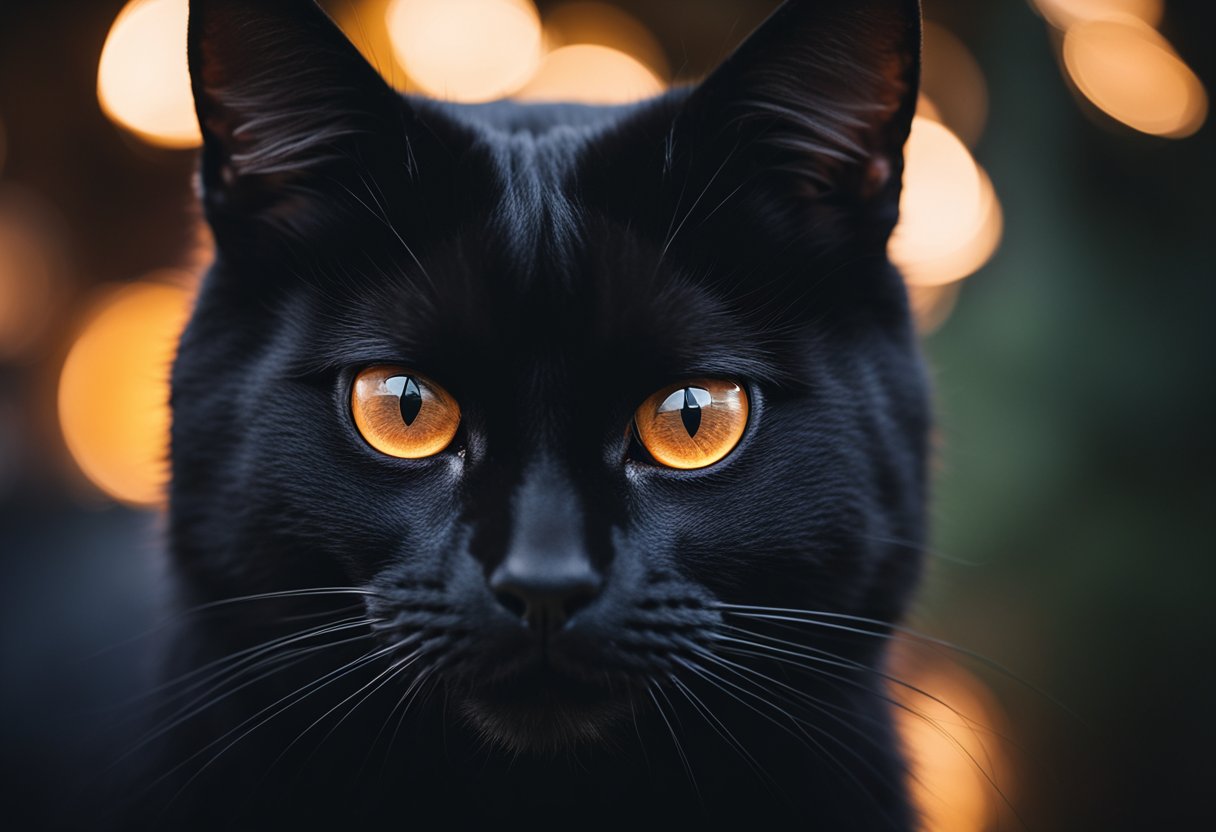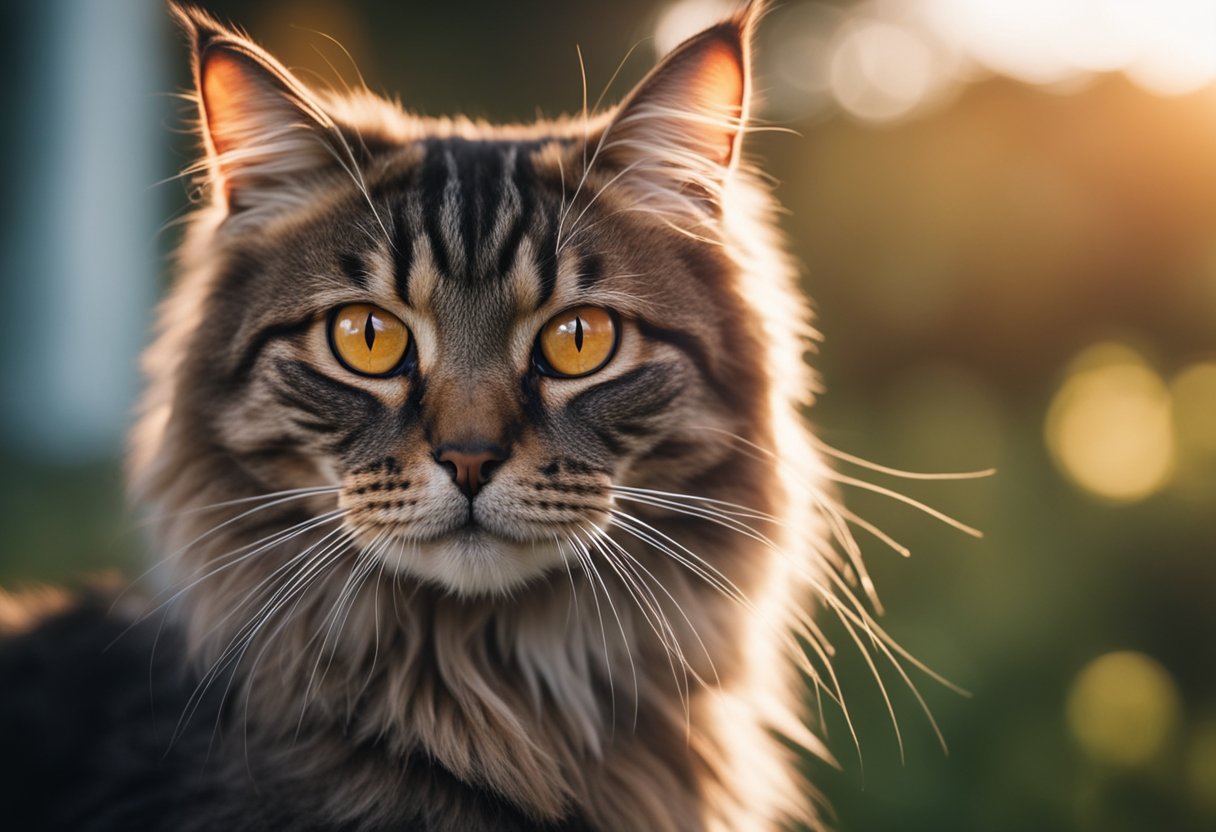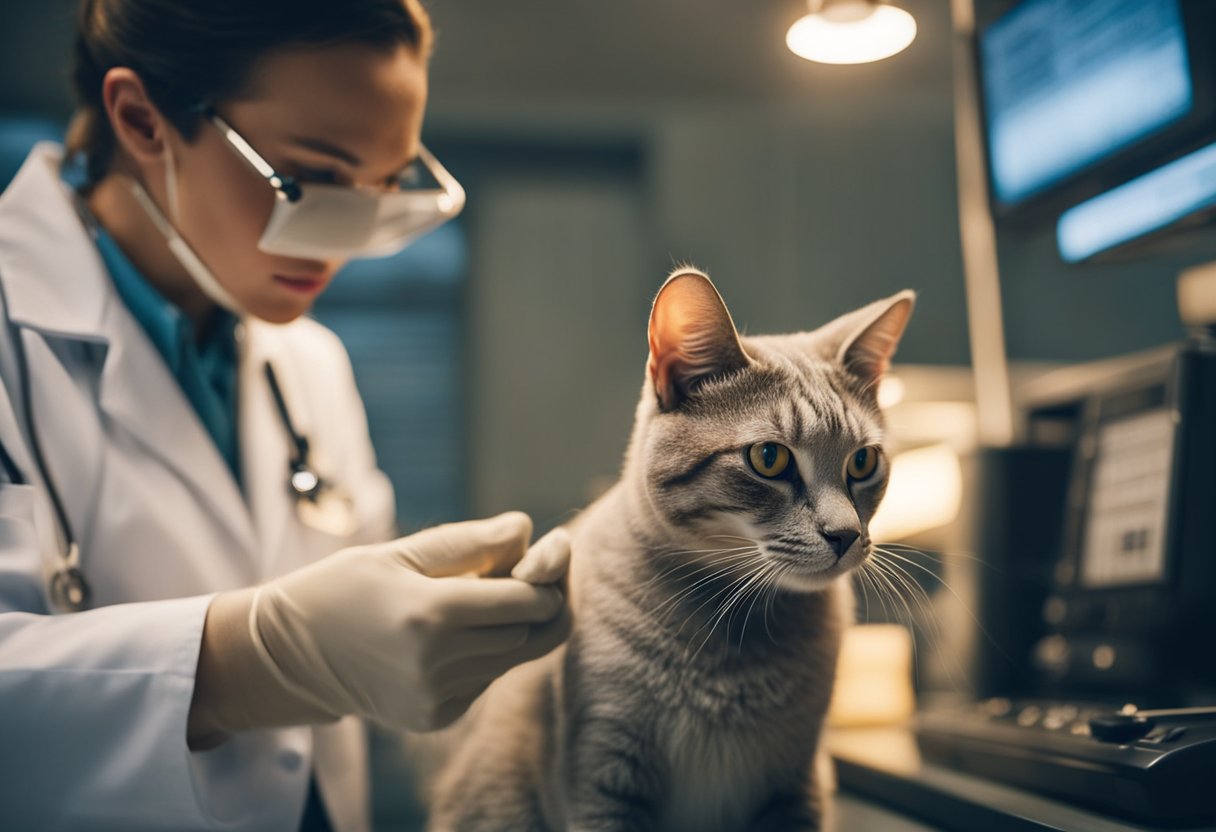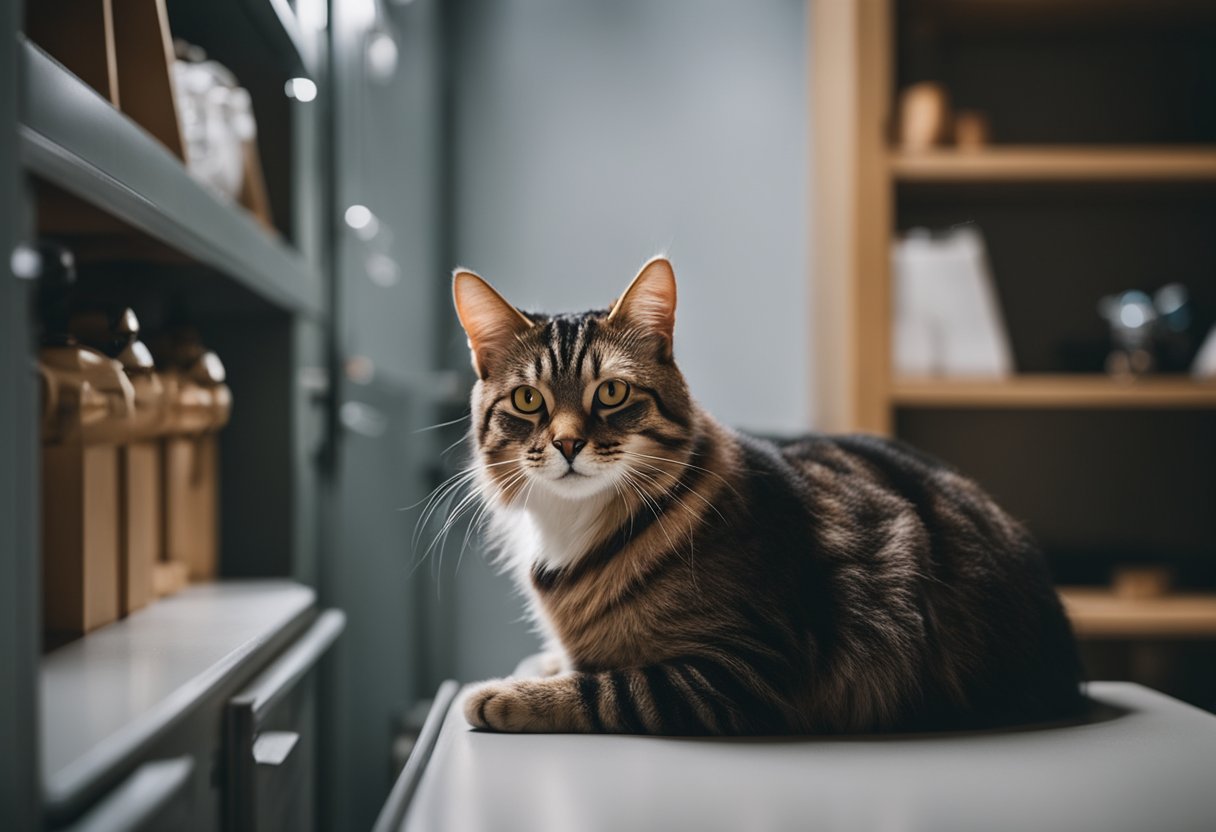Cats are known for their fascinating eye characteristics, particularly their unique ability to glow in dim lighting conditions. This phenomenon occurs when cats’ eyes reflect light, giving them a striking, often red, shine. This glow is a result of a specialized layer of cells in feline eyes known as the tapetum lucidum, which enhances their nocturnal vision by reflecting light that passes through the retina back onto it, thereby increasing the light available to the photoreceptors.

Occasionally, a cat’s eyes may appear red due to more than just the reflective properties of the tapetum lucidum. Various eye conditions can cause the eyes to appear red or inflamed, ranging from common infections to more serious health issues. Recognizing these signs and understanding the implications is vital for cat owners, as early detection and proper treatment can prevent complications. Moreover, maintaining regular veterinary check-ups and being observant of any changes in a cat’s eye appearance can ensure their optimal health and well-being.
Key Takeaways
- Cats’ eyes glow due to a reflective layer behind the retina called the tapetum lucidum.
- Red eyes in cats can signal underlying health issues requiring medical attention.
- Preventative measures and regular check-ups are essential for maintaining cats’ eye health.
The Science of a Cat’s Glowing Eyes

Cats’ eyes are uniquely adapted to nighttime visibility, thanks to a specific reflective layer that enhances their ability to see in low light conditions.
Understanding Tapetum Lucidum
The tapetum lucidum is a mirror-like layer within the eyes of many animals, including cats. It operates behind the retina and acts as a retinal photocopy machine, reflecting visible light back through the retina. This process increases the light available to photoreceptors, thus enhancing a cat’s vision in low light conditions. The reflection can cause the glow red appearance when light shines into their eyes, typically in darker settings. Crepuscular animals, such as cats, use this adaptation to spot both predator and prey during dawn and dusk when their eyes can appear to glow with a vivid green glow or sometimes green eyes.
How Pupil Size Affects Eye Glow
The size of the pupils also plays a critical role in a cat’s eye glow. In dark environments, a cat’s pupils dilate to allow in as much light as possible. When dilated, more light passes through the eye and strikes the tapetum lucidum, causing a more intense glow. Conversely, in bright environments, the pupils contract, and the glow is less discernible. Cats with blue eyes, which lack a tapetum lucidum, often have a red-eye glow, similar to the red-eye effect seen in human photographs. This occurs due to the blood vessels of the eye reflecting light. The field of vision of cats is optimized for low lighting, making their pupils a crucial factor in not only how they perceive their surroundings but also in the eerie glow effects seen at night.
Common Conditions Leading to Red Eyes in Cats

Red eyes in cats can indicate a variety of health issues, from mild allergies to serious conditions. Understanding the specific symptoms and potential causes is crucial for identifying the proper treatment.
Conjunctivitis and Inflammation
Conjunctivitis, the inflammation of the conjunctiva, is a common cause of red eyes in cats. It often results in discharge, swelling, and itchiness. The inflammation can be caused by bacterial infections, viral infections, or even allergens like pollen and cleaning products.
Other Infections and Allergies
Cats can also develop red eyes due to various infections, beyond conjunctivitis. Bacterial and viral infections can affect different parts of the eye, leading to noticeable redness. Allergies to environmental factors, such as dust or smoke, can trigger red eyes accompanied by other symptoms like sneezing or coughing.
Serious Eye Conditions
Some serious eye conditions that cause redness include glaucoma, which is an increase in eye pressure, and uveitis, an inflammation that affects the inner parts of the eye. Additionally, cataracts can sometimes lead to redness as secondary inflammation or trauma to the eye.
Eye Injuries and Trauma
Injury or trauma to the eye can lead to immediate redness and is often accompanied by other signs of damage such as squinting or pawing at the eye. Such injuries can include scratches to the cornea or more severe damage that may result in corneal ulcers. Immediate veterinary attention is essential in these cases to prevent further harm.
Diagnosis and Treatment Options

When a cat’s eyes glow red, it is vital to understand that this can indicate an underlying health issue that requires professional diagnosis and appropriate treatments. The reflection of light from the retina might be normal, but persistent redness can be a sign of medical conditions or structural abnormalities affecting a cat’s vision and overall health.
Veterinary Diagnosis Procedures
Veterinary diagnosis begins with a thorough examination using an ophthalmoscope to inspect the internal structure of the eyes. Veterinarians often employ tonometry to measure intraocular pressure and may conduct a Schirmer tear test to evaluate tear production, crucial in diagnosing dry eye conditions. Additional diagnostics such as blood work and urinalysis may be necessary to rule out systemic causes, including infections like FeLV (feline leukemia virus).
Common Treatments and Medications
Treatment depends on the specific diagnosis. Common treatments may involve eye drops or ointments to treat infections or inflammation. If a bacterial infection is diagnosed, the vet will prescribe an appropriate medication. Structures within the eye that have abnormalities might require surgical intervention. Vaccinations could also be recommended if the red eyes are linked to preventable infectious diseases.
Home Care for Cat’s Eyes
Cat owners play a critical role in their pet’s eye health by providing home care following veterinary guidance. This includes regular cleaning of the eye area with a moistened gauze to remove discharge and contaminants. Medications prescribed by the veterinarian, such as eye drops or ointments, must be administered as directed. Monitoring for changes in pupil size, mood, or behavior can assist in assessing the effectiveness of treatments or identifying the need for follow-up visits to the veterinarian.
Preventative Measures and Best Practices

To ensure the health of a cat’s eyes, cat owners should follow a regimented approach including regular health examinations, controlling environmental factors, and understanding feline behaviors associated with eye health.
Routine Health Checks
Regular health examinations by a veterinarian are essential in detecting and preventing eye health issues in cats. They assess for signs of disease that may cause a cat’s eyes to glow red, such as inflammation or infection. It is recommended that these checks occur at least annually, with more frequent visits for cats with existing health conditions.
- Yearly Check-ups: Schedule appointments with the veterinarian annually.
- Eye Examinations: Ensure the veterinarian examines the cat’s eyes during the health check.
- Vaccinations: Up to date vaccinations help prevent infections that can affect the cat’s eyes.
Environmental Considerations
The environment in which a cat resides can impact eye health significantly. Cat owners should be mindful to minimize exposure to irritants and allergens that may cause distress to a cat’s eyes.
- Indoor Air Quality: Use air filters to reduce potential airborne irritants.
- Cleaning Products: Choose pet-safe cleaning agents to avoid irritants.
- Avoid Smoke: Keep cats away from tobacco smoke, which can aggravate the eyes.
Understanding Cat Behavior
Recognizing signs of discomfort in cat behavior can alert cat owners to potential eye health issues. Squinting, excessive blinking, or rubbing their eyes are indications that a cat may need veterinary care.
- Observant Owners: Be vigilant to behavioral changes such as increased squinting, blinking, or pawing at eyes.
- Rest Area: Provide a quiet, dimly lit area where the cat can rest its eyes.
- Immediate Attention: If sudden changes in eye appearance or behavior occur, contact a veterinarian promptly.
Specific Cat Breeds and Eye Glow
Certain cat breeds display distinctive eye glow colors due to genetic factors. This phenomenon is particularly noticeable in the dark, when their pupils dilate and allow more light to reflect off the tapetum lucidum, a reflective layer behind the retina.
Siamese Cats and Genetic Factors
Siamese cats often exhibit a red eye glow, which can be attributed to their genetic makeup. This breed typically has less pigment in their tapetum lucidum, leading to the reddish appearance when light reflects out of their eyes in dim lighting. Their unique albinism genes, which are responsible for their coat and eye color, can also influence the color of the glow.
Wrap-Up: Monitoring Your Cat’s Eye Health
Monitoring a cat’s eye health is essential for any cat owner. They should regularly observe the appearance of their cat’s eyes in well-lit conditions. Signs to watch for include cloudiness, excessive tearing, visible third eyelid, or inflammation.
Regular Veterinary Check-ups
A regular check-up with a veterinarian is crucial. They can identify and address eye health issues that may not be immediately apparent to the owner.
At-Home Observations
- Appearance: Eyes should be clear and bright.
- Behavior: Monitor for any signs of vision impairment or changes in behavior.
- Discharge: Note any unusual discharge or excessive tearing.
When to Consult a Veterinarian
- Changes: Sudden changes in eye appearance or function.
- Redness: Persistent redness or inflammation.
- Trauma: Any eye injury should be evaluated.
Possible Health Issues
- Glaucoma
- Cataracts
- Conjunctivitis
These conditions can affect the glow of a cat’s eyes and indicate a health issue requiring attention.
It’s the responsibility of the cat owner to ensure their pet’s eyes are observed routinely and to seek professional advice when abnormalities in the eyes are detected. This proactive approach helps maintain the cat’s eye health and overall well-being.
Frequently Asked Questions
The peculiar glow of a cat’s eyes, often captured in photos or witnessed at night, is a consequence of their unique eye structure. The following questions delve into the science and reasons behind this phenomenon.
What causes the red glow in cat’s eyes when they are photographed?
When a cat’s eyes are photographed, the red glow is produced by light reflecting off the tapetum lucidum, a layer behind the retina that enhances night vision.
How does eye color affect the reflection color in cat’s eyes at night?
Eye color can influence the reflective color seen in a cat’s eyes at night. Typically, cats with lighter-colored eyes may reflect a red or pink glow, while those with darker eyes may reflect a green or yellow glow.
What is the science behind cats’ glowing eyes in low light conditions?
Cats’ glowing eyes in low light conditions are due to their tapetum lucidum, which acts as a mirror, reflecting light back through the retina and improving their night vision.
Can one eye display a different reflective color than the other in cats, and why?
In rare cases, a cat’s eyes may display different reflective colors if there is a variance in pigmentation or due to a health issue affecting one eye but not the other.
What health issues might cause a cat’s eye to appear red or watery?
Red or watery eyes in cats could indicate health issues ranging from allergies to eye infections, and immediate veterinary attention is recommended.
Why might a cat’s eye color seem to change to red over time?
A cat’s eye color may seem to change to red over time due to age-related changes in iris pigmentation or underlying health conditions affecting the eyes.

